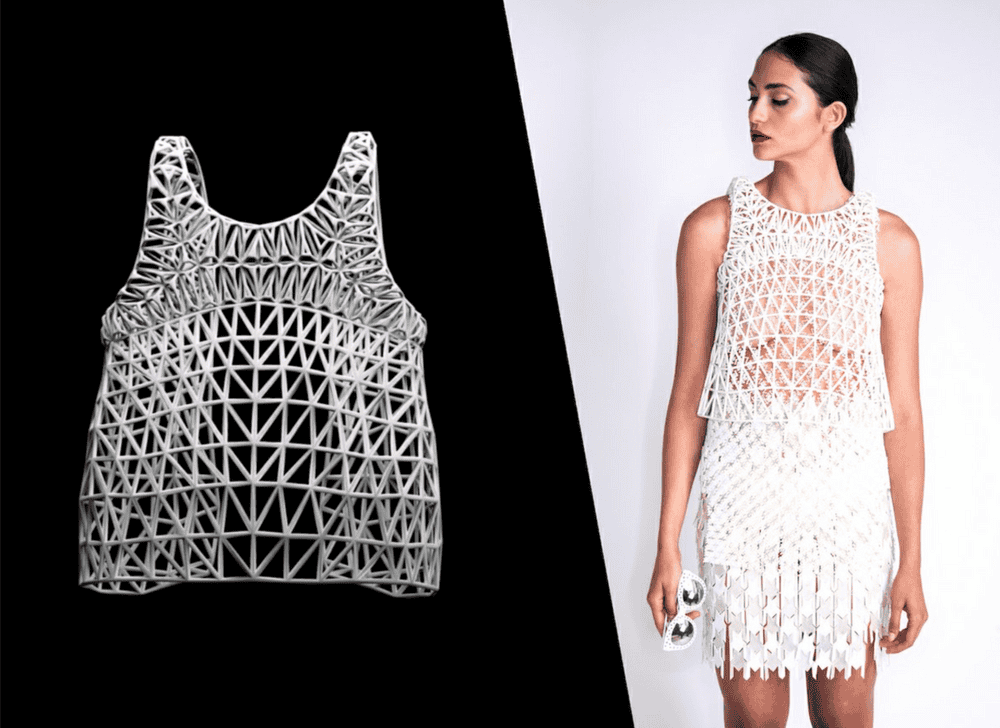In recent years, the fashion industry has undergone a revolutionary transformation with the integration of 3D design and fabrics. 3D design simplifies the design development process and saves time and money while reducing the environmental impact. This innovative approach has not only streamlined the design process but has also opened up new possibilities for creativity and sustainability. Due to 3D and augmented reality experiences, fashion brands can connect with audiences across the world. This technology is changing the perspective of fashion designers approaching product development, pattern making, and fittings. With the help of this technology, fashion designers are no longer required to use real fabrics or sew by hand. By combining technology and textiles, the fashion industry has taken a giant leap forward, redefining traditional design methods and enhancing the overall consumer experience.
What is 3D in Fashion Design?
Developing a 3D prototype out of a 2D digital pattern is called 3D in fashion design. 3D digital design helps to create less waste as a designer can build garments digitally. This technology has transformed the way clothing is designed and manufactured. Designers can work on 3D software to stitch patterns together and provide a production-ready 3D version of a garment. One of the biggest challenge designers face with 3D software are the ability to keep the garments realistic, showcasing each drape of the fabric with the limited collection in the library from where you get to choose and design.
Streamlining the Design Process:
Traditionally, fashion designers would spend countless hours sketching, draping, and creating physical prototypes to bring their ideas to life. However, with the introduction of 3D design software, designers now can visualize and manipulate their creations in a virtual environment. This digital platform allows for rapid prototyping, minimizing the time and resources required to develop a new collection. Designers can experiment with different silhouettes, patterns, and fabric combinations, enabling them to make informed decisions before any physical production begins. This not only accelerates the design process but also reduces the overall cost associated with trial and error.
Enhancing Creativity and Innovation:
The integration of 3D design and fabrics has also sparked a wave of creativity and innovation within the fashion industry. Designers are no longer limited to traditional techniques and can explore new dimensions in their designs. With 3D printing technology, complex shapes, and structures can be created with precision, offering endless possibilities for avant-garde fashion pieces. Additionally, the use of virtual reality (VR) and augmented reality (AR) has allowed designers to showcase their creations in immersive and interactive experiences, further pushing the boundaries of creativity. By leveraging these technological advancements, fashion designers can create garments that were previously unimaginable, captivating the attention of consumers and industry professionals alike.
Sustainability and Reduced Waste:
The fashion industry has been criticized for its detrimental impact on the environment, with excessive waste being a major concern. However, the integration of 3D design and fabrics has opened up avenues for a more sustainable approach. Virtual prototyping eliminates the need for excessive physical samples, reducing fabric waste and carbon footprint. Designers can experiment with different materials digitally, simulating their appearance and behavior without producing physical swatches. This reduces the consumption of resources and minimizes the environmental impact. Furthermore, 3D printing enables on-demand production, reducing overstock and the need for mass manufacturing. By embracing 3D design and fabrics, the fashion industry can transition towards a more sustainable and responsible future.
Improved Consumer Experience:
The utilization of 3D design and fabrics has not only revolutionized the design process but has also enhanced the consumer experience. With virtual try-on technology, shoppers can visualize how garments will look on them without physically trying them on. This not only provides convenience but also reduces the number of returns, improving customer satisfaction and decreasing waste. Moreover, personalized customization is made easier through 3D design, allowing consumers to create unique and tailored garments to suit their preferences. This customization enhances the emotional connection between consumers and fashion, resulting in a more engaging and immersive shopping experience.
The integration of 3D design and fabrics has propelled the fashion industry into a new era of creativity, sustainability, and consumer engagement. Designers can now bring their visions to life rapidly and efficiently, pushing the boundaries of what is possible. By leveraging these technological advancements, the fashion industry can reduce waste, improve sustainability, and provide consumers with a personalized and engaging experience. As 3D design and fabrics continue to evolve, the fashion industry can look forward to a future where imagination knows no bounds, and where innovation and sustainability go hand in hand.
For more blogs related to fashion design: https://www.dotsod.in/category/fashion-design/
Follow us on Instagram: https://www.instagram.com/dotschoolofdesign/



